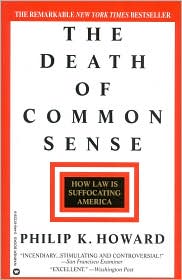My previous post stirred some interest in the blogosphere on the issue of Mexico being in danger of becoming a “Failed State” and prompted others to respond with Mexico related analysis of their own. Here are some that caught my eye:
POINT – Mexico is a Failed State or at least in some danger of becoming so:
Threatswatch.org (Fraser) Los Zetas and the Denial of Mexico’s Failed State Status
The softening of words and the aversion to stating the obvious by the Administration simply obliterates the reality that President Felipe Calderón of Mexico “leads” a country dominated by the cartels and not governed by the federal government. The transparent denial of the recent Joint Operating Environment report is troubling at best.
To better understand just how close to the precipice he is, it might be worthwhile to take another look at the organization (and movement) of Los Zetas. As a reminder, Los Zetas are a paramilitary group tied to the Gulf Cartel. Their origins and their evolution from being deserters from the Mexican special forces to a criminal organization is chronicled in a report from International Relations and Security Network
….With each of the original members training at least another ten, they grew to over 300 strong by 2003. In just the first quarter of 2009, Los Zetas (the organization) has been linked to a death threat against the president of Guatemala, the hand grenade tossed in Pharr, Texas and various other criminal acts. The ranks of Los Zetas has grown, and strikingly, they have broken ranks with the Gulf Cartel. Over time however, and with the deaths of some of the original Zetas, they have morphed into an organization. This is a very important distinction to note.
RBO – Are Afghanistan, Pakistan, Mexico ‘failed states’? If so, then what?
….In particular there is recent debate as to whether Mexico is/is not a failed state. If it is, then we ask whether its “failed” status is on a par with such other failed states as Pakistan and Afghanistan? – Even though there are those who do not subscribe to the notion that either of them is a failed state.
As always, let’s start at the beginning. What is a failed state?
In the simplest of definitions, a failed state is one that has a “shattered social and political structure.”
Writing December 1999 for the International Review of the Red Cross, Daniel Thürer, J.D. (right), Professor of International Law, European Law, Constitutional Law and Administrative Law at the University of Zurich, said
Failing States are invariably the product of a collapse of the power structures providing political support for law and order, a process generally triggered and accompanied by “anarchic” forms of internal violence.
Dr. Thürer wrote that former Secretary-General of the United Nations, Boutros Boutros-Ghali, described this situation in the following way (emphasis added):
A feature of such conflicts is the collapse of state institutions, especially the police and judiciary, with resulting paralysis of governance, a breakdown of law and order, and general banditry and chaos. Not only are the functions of government suspended, but its assets are destroyed or looted and experienced officials are killed or flee the country. This is rarely the case in inter-state wars. It means that international intervention must extend beyond military and humanitarian tasks and must include the promotion of international reconciliation and the re-establishment of effective government. States in which institutions and law and order have totally or partially collapsed under the pressure and amidst the confusion of erupting violence, yet which subsist as a ghostly presence on the world map, are now commonly referred to as “failed States” or “Etats sans gouvernement”.
Jay Fraser, who has been watching developments in Mexico for some time, drills down on the most violent and fastest evolving faction among the cartel groups in Mexico. Procrustes concentrates on the “Failed State” concept and examines how conditions in Mexico compare to academic yardsticks and the case studies of Afghanistan and Pakistan, two countries that inevitably crop up in discussions of failed and failing states.
COUNTERPOINT – Mexico is not a failing state or has greater resilience than experts are acknowledging:
Apropos Two Theories – Why Mexico may NOT fall apart – and a way to think about it
I’ve never seen so many American analysts and journalists sounding alarms about Mexico – most for good reasons, others for their own agendas. And it’s true, parts of Mexico have turned awfully violent, barely governable. Government controls have weakened, and security trends are adverse. Domestic terrorism and insurgency are not presently the problem; it’s the extreme crime and corruption, driven by the drug cartels and other criminal gangs.
….Yet, I’m struck that long-time American experts who specialize on Mexico are not providing counter-arguments. A few Mexicans are, lately Enrique Krauze. But no Americans I know of (though I’ve not searched exhaustively).Shouldn’t analysts and journalists who specialize on Mexico be doing a better job of wondering whether and why the growing alarmism may be wrong – again?When I worked as a specialist on Mexico, I experienced three or four periods when Mexico seemed to be on the verge of instability, in particular:
- In 1968, at the time of the student uprising and its military suppression (I was then a graduate student studying in Mexico City).
- During 1984-8, when a few U.S. government analysts claimed that Mexico was about to collapse due to multiple economic, political, and other crises.
- In 1994-5, when the Zapatista uprising raised new specters of widespread insurgency, if not terrorism.
Each time Mexico remained stable and recovered. And it did so mostly for reasons that American analysts had not understood or anticipated well at the time – including American experts on Mexico who did not buy into the alarmism.In these three instances, the key stabilizing factor turned out to be some kind of social or organizational network that American analysts were barely aware of:
- In 1968, it was intra-elite networking that revolved around the mysterious camarilla system (or so I think, though I was just a grad student then).
- In the mid 1980s, it was familial and other social networks that cushioned the effects of unemployment and other economic displacements.
- In 1994, it was the roles played by newly-formed networks of human-rights and other activist NGOs, first in calming the Zapatista scene, later in monitoring the 1994 presidential election campaign.
Conditions in Mexico look worse than ever this time around – much worse, not just along the U.S. border, but everywhere that the drug cartels are powerful. So I’m not suggesting optimism, but rather a search for additional factors that may moderate the equations of gloom.What might keep Mexico from disintegrating this time? My guesstimate is that networks will be the decisive factor again. And the networks that will matter most this time are:
- Informal intra-elite social networks that reflects what’s left of the old camarilla dynamic.
- Cross-border organizational networks for U.S.-Mexico security (military, police, intel) cooperation
David Ronfeldt, for new readers here, is a major “edge” thinker in the national security field at RAND and is a co-author (with John Arquilla) of the influential “classic”, Networks and Netwars: The Future of Terror, Crime, and Militancy , which sits on my shelf about two feet from me as I type this. As it happens, Ronfeldt also specialized in Mexican and Latin American security as an analyst during the Cold War which gives means that his caveats are worth careful consideration. Frankly, we are all better off if Ronfeldt is correct and the “alarmists” are wrong, though I think the grim state of affairs south of the Rio Grande is deterring most Mexico experts from going out on a limb to make positive predictions.
, which sits on my shelf about two feet from me as I type this. As it happens, Ronfeldt also specialized in Mexican and Latin American security as an analyst during the Cold War which gives means that his caveats are worth careful consideration. Frankly, we are all better off if Ronfeldt is correct and the “alarmists” are wrong, though I think the grim state of affairs south of the Rio Grande is deterring most Mexico experts from going out on a limb to make positive predictions.



by Steven Johnson
 the reader to an understanding how bottom-up, “blind”, systems work and the principles behind them. Highly readable and next to no jargon. Probably due soon for an updated edition though, given the scientific advances in research in network and complexity studies.
the reader to an understanding how bottom-up, “blind”, systems work and the principles behind them. Highly readable and next to no jargon. Probably due soon for an updated edition though, given the scientific advances in research in network and complexity studies. by Adrian Goldsworthy
 centuries as it was during the golden age of philosopher-warrior-emperor Marcus Aurelius. Or that there was no fall of the empire at all, just a gentle “transformation” into something new. Goldsworthy discusses the likelihood of Late antquity “paper legions” of Roman armies which, in any event, scarcely resembled in elan, tactics or fighting strength the ones that Julius Caesar wielded in Gaul. A tour de force marred only by a weird epilogue that ranges from pedestrian to ( in it’s last sentences) truly awful – was it it tacked on as an afterthought? Did the editor of the rest of the book die before it was completed? Regardless, How Rome Fell is a worthy addition to an collection of popular ancient histories.
centuries as it was during the golden age of philosopher-warrior-emperor Marcus Aurelius. Or that there was no fall of the empire at all, just a gentle “transformation” into something new. Goldsworthy discusses the likelihood of Late antquity “paper legions” of Roman armies which, in any event, scarcely resembled in elan, tactics or fighting strength the ones that Julius Caesar wielded in Gaul. A tour de force marred only by a weird epilogue that ranges from pedestrian to ( in it’s last sentences) truly awful – was it it tacked on as an afterthought? Did the editor of the rest of the book die before it was completed? Regardless, How Rome Fell is a worthy addition to an collection of popular ancient histories. by Steven Pressfield
 is brilliant but because it is profound. Utilizing select personal vignettes and other anecdotes, Pressfield distills in everyday language the essence of what creative people need to understand if they are to succeed – concepts of “resistance”, which seductively undermine your efforts, and being a “professional”, which is the mindset that will get you there.
is brilliant but because it is profound. Utilizing select personal vignettes and other anecdotes, Pressfield distills in everyday language the essence of what creative people need to understand if they are to succeed – concepts of “resistance”, which seductively undermine your efforts, and being a “professional”, which is the mindset that will get you there.
 has a more general implication:
has a more general implication: Suffocating America
Suffocating America
 you have an established network of people with whom you have a reason to be in frequent contact and a common set of interests. I have that on twitter with a sizable
you have an established network of people with whom you have a reason to be in frequent contact and a common set of interests. I have that on twitter with a sizable 

